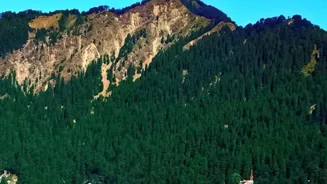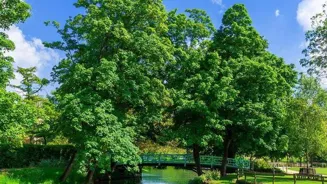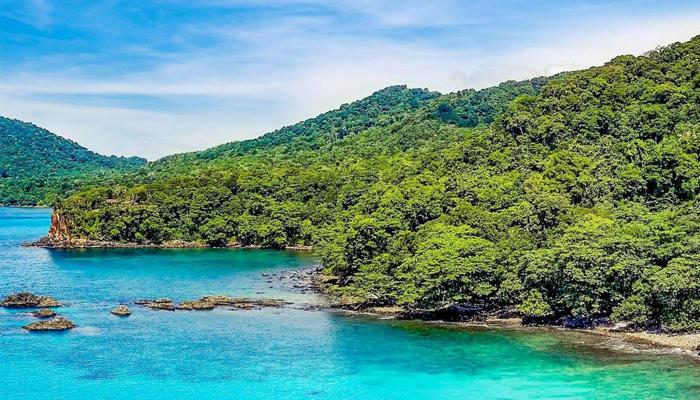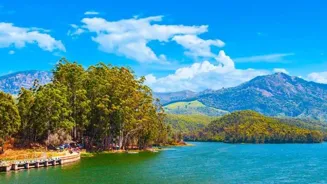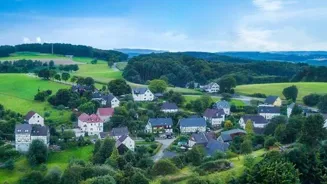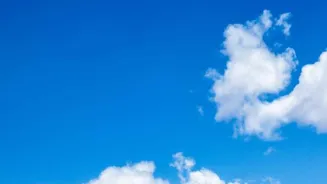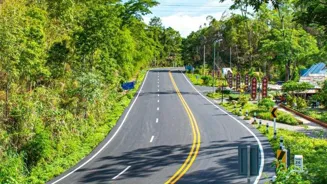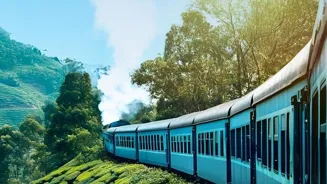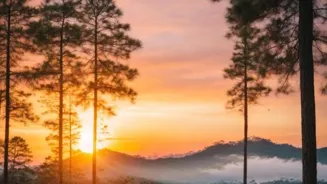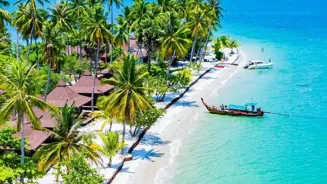Discover the ideal seasons for popular Indian destinations. Plan your trip for the perfect weather and experiences!
Planning a holiday? Figuring out the 'right' time to visit a place can be quite the task,
no? You want pleasant weather, fewer crowds, and maybe even some special events. After all, no one wants their hill station trip ruined by torrential downpours or their beach vacation spoiled by scorching heat.
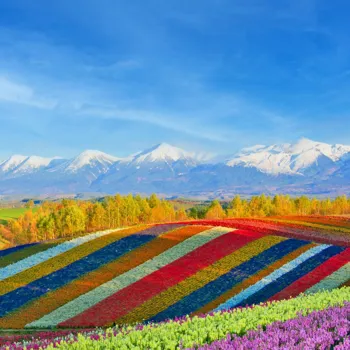
This guide will give you the ideal seasons for some popular Indian destinations, helping you make the most of your travel plans. Let's dive in and find the perfect time to explore!
Rajasthan: The Land of Kings Beckons
Rajasthan, with its majestic forts, vibrant culture, and delectable sweets, is a year-round tourist draw. However, the desert heat can be intense, especially during the summer months (March to June). Temperatures can soar upwards of 45 degrees Celsius, making sightseeing quite uncomfortable.
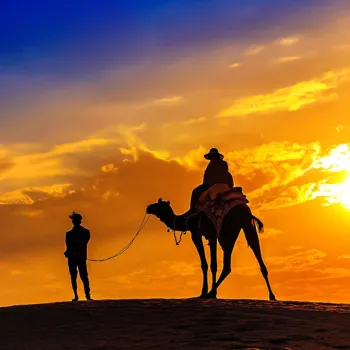
The best time to visit Rajasthan is during the winter months, from October to March. The weather is pleasant, with sunny days and cool nights. This is the peak tourist season, so expect larger crowds and slightly higher prices.
Also the monsoon season from July to September offers a refreshing change with lush greenery, even though some activities might be restricted. The best thing to do is plan ahead.
The winter months in Rajasthan are simply magical.
Imagine exploring the Amber Fort in Jaipur under the warm sun, or taking a camel safari in Jaisalmer with the cool desert breeze on your face.
You can comfortably stroll through the bustling markets, participate in cultural festivals, and enjoy outdoor activities without feeling overwhelmed by the heat. The evenings are perfect for enjoying traditional Rajasthani music and dance performances.
The mild weather also makes it ideal for taking leisurely walks through the gardens and courtyards of the magnificent palaces. Many special festivals happen during this season, adding to the charm.
If you're looking for a more budget-friendly option and don't mind a bit of humidity, the monsoon season can be a good alternative. The rains transform the arid landscape into a green oasis, and the lakes and waterfalls come alive.
However, be prepared for occasional showers and potential disruption to your travel plans. Some hotels may offer discounted rates during this period. Ultimately, the best time to visit Rajasthan depends on your personal preferences and tolerance for different weather conditions.
Just remember to pack accordingly and stay hydrated, no matter when you choose to go. Also check if the places you want to visit remain open at this time of the year.
Kerala: God's Own Country All Year Round
Kerala, known for its serene backwaters, lush greenery, and Ayurvedic therapies, is a destination that can be enjoyed throughout the year. However, each season offers a unique experience.
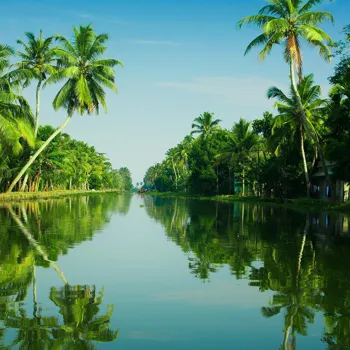
The winter months (September to March) are considered the peak season, with pleasant temperatures and low humidity. This is the ideal time for exploring the beaches, cruising the backwaters, and visiting the hill stations.
The monsoon season (June to August) brings heavy rainfall, transforming the landscape into a lush green paradise. While outdoor activities may be limited, this is a great time to experience Ayurvedic treatments and enjoy the tranquility of nature.
The summer months (March to May) can be hot and humid, but they offer off-season discounts and fewer crowds.
During the winter months in Kerala, the weather is perfect for sightseeing and outdoor activities.
You can enjoy a relaxing houseboat cruise on the backwaters of Alleppey, explore the tea plantations of Munnar, or soak up the sun on the beaches of Kovalam. The temperature is comfortable, making it ideal for trekking, wildlife spotting, and visiting the various temples and historical sites.
The evenings are cool and pleasant, perfect for enjoying seafood delicacies and watching Kathakali performances. The festive season of Onam, which falls in August/September, is a major highlight, with colorful processions, traditional dances, and delicious feasts.
If you plan your visit around Onam be sure to book in advance.
The monsoon season in Kerala offers a different kind of beauty. The heavy rains transform the landscape into a vibrant green, and the waterfalls cascade with full force.
This is considered to be the best time for Ayurvedic treatments, as the atmosphere is conducive to healing and rejuvenation. You can enjoy the tranquility of the backwaters, surrounded by lush greenery, or take a drive through the mist-covered hills.
While outdoor activities may be limited, you can still visit museums, art galleries, and enjoy indoor cultural performances. The off-season discounts also make it a budget-friendly option. Just remember to carry rain gear and be prepared for occasional disruptions to your travel plans.
Goa: Sun, Sand, and Sea in Abundance
Goa, the land of beaches, parties, and Portuguese heritage, attracts visitors throughout the year. However, the best time to visit Goa is during the winter months, from November to February. The weather is pleasant and sunny, with cool sea breezes.

This is the peak tourist season, so expect larger crowds and higher prices. The summer months (March to May) can be hot and humid, but they offer fewer crowds and lower prices.
The monsoon season (June to October) brings heavy rainfall and rough seas, making it less ideal for swimming and sunbathing. However, it also offers a unique opportunity to experience the lush greenery and witness the Dudhsagar Falls in full flow.
Try to avoid travel in April when the heat would be unbearable.
During the winter months in Goa, the beaches are buzzing with activity. You can enjoy swimming, sunbathing, water sports, and beach parties. The weather is perfect for exploring the various churches, temples, and historical sites.
You can also take a cruise on the Mandovi River, visit the spice plantations, or go birdwatching in the Salim Ali Bird Sanctuary. The evenings are lively, with numerous restaurants, bars, and casinos offering entertainment.
The festive season of Christmas and New Year is a major highlight, with vibrant celebrations and parties. Make sure you get advance booking for the stays because they are at peaks during this time of the year.
If you're looking for a more relaxed and budget-friendly experience, the summer months can be a good option. While the weather can be hot and humid, you can still enjoy the beaches, especially in the early morning or late afternoon.
The crowds are significantly smaller, allowing you to have a more peaceful and secluded experience. You can also explore the interior of Goa, visit the waterfalls, or take a cooking class. The monsoon season is best avoided if you're primarily interested in beaches and water activities.
However, it offers a unique opportunity to witness the lush greenery and enjoy the waterfalls in full flow.
Himachal Pradesh: Himalayan Beauty at its Finest
Himachal Pradesh, with its snow-capped mountains, lush valleys, and charming hill stations, is a popular destination for nature lovers and adventure enthusiasts. The best time to visit Himachal Pradesh depends on your interests and the specific region you want to explore.
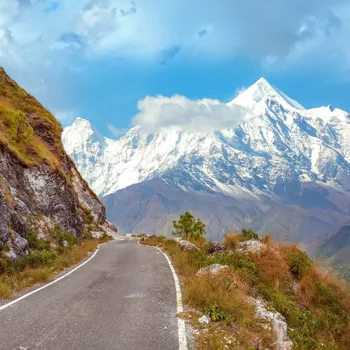
The summer months (March to June) are ideal for trekking, camping, and sightseeing. The weather is pleasant, with clear skies and moderate temperatures. The winter months (October to February) are perfect for snow activities, such as skiing and snowboarding.
The monsoon season (July to September) brings heavy rainfall, which can disrupt travel plans and cause landslides.
The summer months in Himachal Pradesh are perfect for exploring the hill stations of Shimla, Manali, and Dharamshala.
You can enjoy trekking, paragliding, and river rafting, or simply relax and soak in the stunning views. The weather is ideal for visiting the various temples, monasteries, and historical sites. The flowers are in full bloom, adding to the beauty of the landscape.
The evenings are cool and pleasant, perfect for enjoying a bonfire and stargazing. Some roads may close due to harsh weather so check this before hand.
The winter months in Himachal Pradesh offer a magical experience for snow lovers.
You can enjoy skiing, snowboarding, and ice skating in places like Shimla, Manali, and Kufri. The snow-covered landscapes are breathtakingly beautiful, and the atmosphere is festive. You can also visit the various monasteries and temples, which are often decorated with snow.
The evenings are cold and cozy, perfect for enjoying a hot cup of tea and sitting by the fireplace. The monsoon season is best avoided due to heavy rainfall and potential landslides.
However, if you're looking for a peaceful and secluded getaway, you can still visit the lower regions of Himachal Pradesh during this time.
Uttarakhand: The Land of Gods
Uttarakhand, nestled in the Himalayas, offers a blend of spiritual serenity and adventurous escapades. The best time to visit varies depending on what you wish to experience.
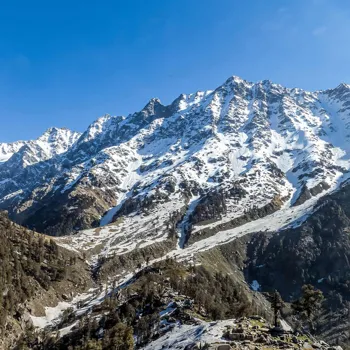
Summer (March to June) provides pleasant weather ideal for trekking, camping, and exploring hill stations like Nainital and Mussoorie. Winter (October to February) transforms the landscape into a snowy wonderland, perfect for skiing and snowboarding in Auli.
However, the monsoon season (July to September) brings heavy rainfall, causing landslides and making travel difficult. The chardham yatra also holds importance, check its schedules.
Summer in Uttarakhand invites you to bask in the warmth of the sun while exploring its scenic beauty.
Trek through rhododendron forests, camp beside gurgling rivers, or simply wander through the charming hill stations. The clear skies offer breathtaking views of the snow-capped peaks. The weather is also conducive for visiting the sacred temples and taking dips in the holy rivers.
Adventure enthusiasts can indulge in activities like river rafting and paragliding. Just remember to pack layers as the temperature can fluctuate, especially at higher altitudes.
The winter months turn Uttarakhand into a paradise for snow enthusiasts.
Auli, with its pristine slopes, becomes a hub for skiing and snowboarding. The snow-covered landscape creates a magical ambiance, perfect for a romantic getaway or a family adventure. However, be prepared for cold temperatures and icy winds.
Ensure you have adequate warm clothing and check road conditions before traveling, as snowfall can often lead to road closures. The winter months also offer a unique opportunity to witness the Gangotri and Yamunotri temples covered in snow.
Darjeeling: The Queen of Hills
Darjeeling, with its rolling hills, tea gardens, and stunning views of the Himalayas, is a popular hill station in West Bengal. The best time to visit Darjeeling is during the spring (March to May) and autumn (September to November) seasons.
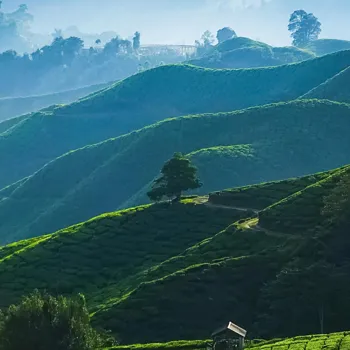
The weather is pleasant, with clear skies and comfortable temperatures. These seasons offer the best visibility of the Kanchenjunga peak. The summer months (June to August) bring heavy rainfall, which can disrupt travel plans and cause landslides.
The winter months (December to February) are cold, with occasional snowfall.
During the spring and autumn seasons in Darjeeling, the weather is perfect for exploring the tea gardens, visiting the monasteries, and taking a ride on the Darjeeling Himalayan Railway (Toy Train).
The clear skies offer breathtaking views of the Kanchenjunga peak. You can also enjoy trekking, birdwatching, and shopping for local handicrafts. The evenings are cool and pleasant, perfect for enjoying a cup of Darjeeling tea and watching the sunset over the mountains.
Also try to take a ride in the ropeway.
The summer months in Darjeeling are characterized by heavy rainfall, which can disrupt travel plans and cause landslides. While the lush greenery is beautiful, outdoor activities may be limited.
The winter months can be cold, but offer a unique opportunity to see the snow-capped peaks. However, be prepared for icy winds and occasional snowfall. Ultimately, the best time to visit Darjeeling depends on your personal preferences and tolerance for different weather conditions.
AI Generated Content. Glance/InMobi shall have no liability for the content